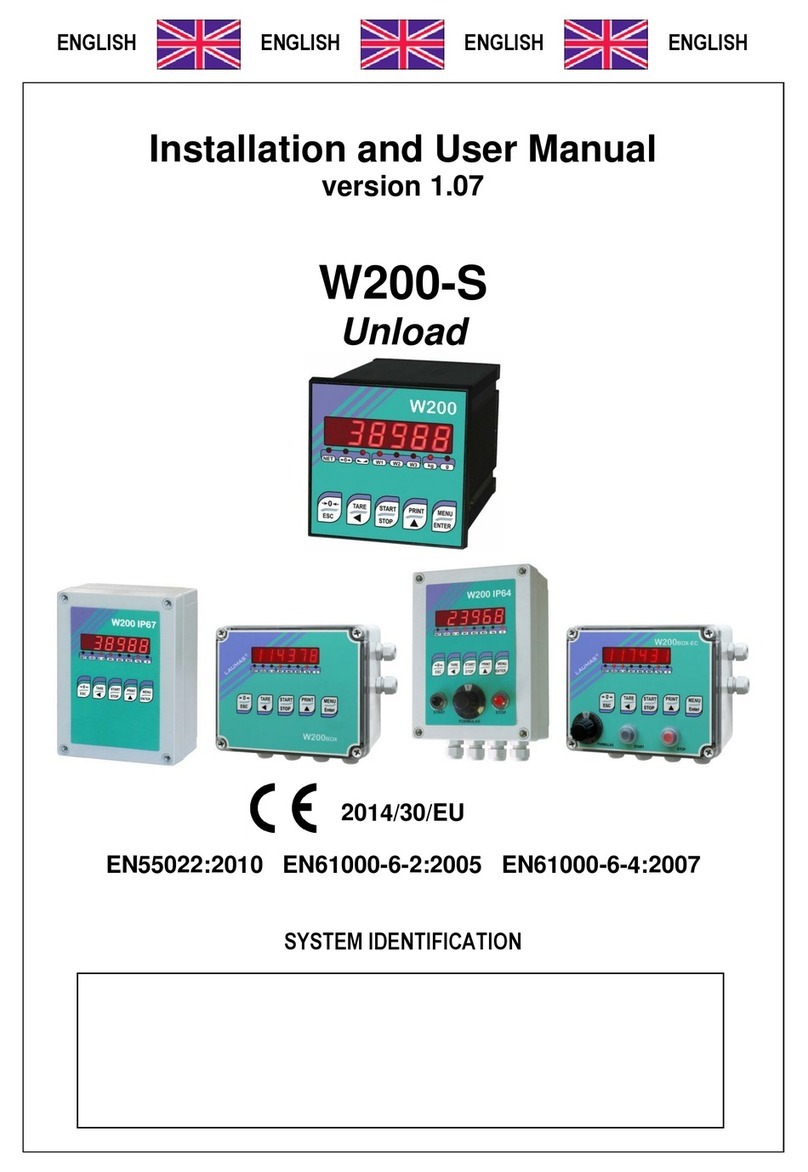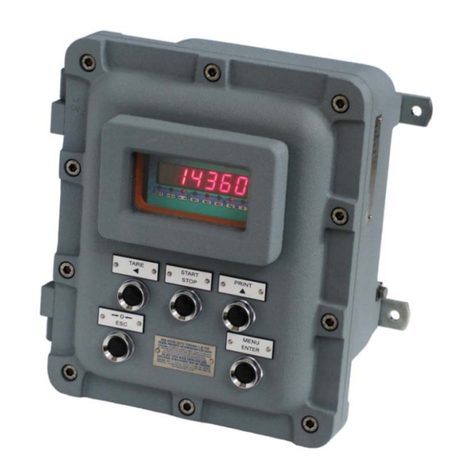
COMMUNICATION SETTING......................................................................................................... 26
WEIMOD MODE ............................................................................................................................. 27
WEIRIP MODE................................................................................................................................ 27
ALARM RELAY CLOSURE.................................................................................................... 28
TEST....................................................................................................................................... 28
DATE AND TIME SETTING.................................................................................................... 28
OPERATION SETTINGS........................................................................................................ 29
INFO MENU............................................................................................................................ 29
PROGRAMMING OF BATCHING CONSTANTS ................................................................. 30
MINIMUM WEIGHT................................................................................................................. 30
MAXIMUM WEIGHT ............................................................................................................... 30
SAFE EMPTYING TIME ......................................................................................................... 30
WAITING TIME....................................................................................................................... 30
NO COMPARISON TIME ....................................................................................................... 31
NO PRODUCT LOAD TIME ................................................................................................... 31
NO PRODUCT UNLOAD TIME .............................................................................................. 31
FALL....................................................................................................................................... 31
TOLERANCE.......................................................................................................................... 32
SLOW..................................................................................................................................... 32
TAPPING FUNCTION............................................................................................................. 32
AUTOTARE............................................................................................................................ 33
AUTOTARE DELAY............................................................................................................... 33
STABLE TARE....................................................................................................................... 33
CONSUMPTION FOR EACH FORMULA............................................................................... 33
PRINT AT CYCLE END.......................................................................................................... 34
NUMBER OF BATCHING PRINTOUTS ................................................................................. 34
CHECKING PC PRESENCE .................................................................................................. 34
WAITING CONFIRMATION FROM PC (SLAVE) ................................................................... 34
SWITCHING OF THE ALARM RELAY ON WEIGHT ............................................................. 34
SWITCHING OF THE TOLERANCE RELAY ON WEIGHT.................................................... 34
FORMULAS PROGRAMMING............................................................................................. 35
DELETING FORMULAS......................................................................................................... 35
BATCHING........................................................................................................................... 36
BATCHING START FROM EXTERNAL CONTACT .............................................................. 37
DISPLAYING DURING BATCHING ....................................................................................... 37
BATCHING STOP .................................................................................................................. 37
RESUME BATCHING AFTER A POWER CUT...................................................................... 38
CONSUMPTION................................................................................................................... 38
CONSUMPTION DELETION .................................................................................................. 38
ALARMS .............................................................................................................................. 39
PRINTING EXAMPLES........................................................................................................ 41
RESERVED FOR THE INSTALLER..................................................................................... 44


































